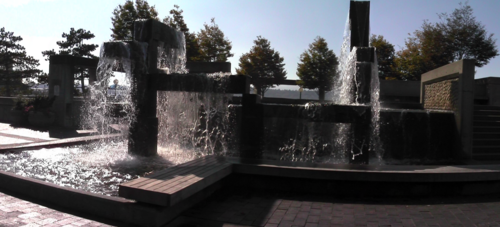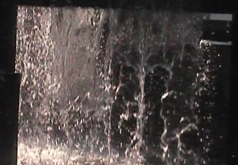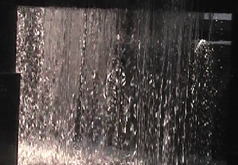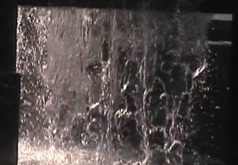Panoramic Video Textures
Aseem Agarwala1
Colin Zheng1
Chris Pal3
Maneesh Agrawala2
Michael Cohen2
Brian Curless1
David Salesin1,2
Richard Szeliski2
1University of Washington
2Microsoft Research
3University of Massachusetts, Amherst
Abstract
This paper describes a mostly automatic method for taking the output
of a single panning video camera and creating a panoramic video
texture (PVT): a video that has been stitched into a single, wide
field of view and that appears to play continuously and indefinitely.
The key problem in creating a PVT is that although only a portion of
the scene has been imaged at any given time, the output must
simultaneously portray motion throughout the scene. Like previous
work in video textures, our method employs min-cut optimization to
select fragments of video that can be stitched together both spatially
and temporally. However, it differs from earlier work in that the
optimization must take place over a much larger set of data. Thus, to
create PVTs, we introduce a dynamic programming step, followed by a
novel hierarchical min-cut optimization algorithm. We also use
gradient-domain compositing to further smooth boundaries between video
fragments. We demonstrate our results with an interactive viewer in
which users can interactively pan and zoom on high-resolution PVTs.
Citation
Aseem Agarwala, Colin Zheng, Chris Pal, Maneesh Agrawala, Michael Cohen, Brian Curless, David Salesin, Richard Szeliski.
Panoramic Video Textures.
ACM Transactions on Graphics (Proceedings of SIGGRAPH 2005), 2005.
Paper
SIGGRAPH 2005 pre-print (700K PDF)
Video
Video (5 min, 720x480, 112 MB, WMV format)
Using Windows Media Player 10? The video may appear a little dark. Here's how to fix it.
Interactive viewer and data sets
By far, the best way to view our results at their full resolution is
within our interactive viewer. Our viewer is a Windows XP
application; however, it requires a strong computer with a good
graphics card to play the results at their full frame-rate. In our
experience, you need at least 1 GB of RAM, and a graphics card with at
least 128 MB of texture memory. The waterfall data set is the
most intensive, so try one of the others first. Also, the data sets
are fairly large; the size of the download is listed in the table
below. If you have success on a machine that doesn't meet the above
requirements, please let us
know!
Viewer (400K Zip file)
Data set
name & size
| Input video
(WMV, 1/2 resolution)
| Data Set
|
| Waterfall (104MB) |
 |
 |
| Yachts (64MB) |
 |
 |
| Park (105MB) |
 |
 |
| Waterfront (112MB) |
 |
 |
Figure 3, video form
Figure 3 of our paper shows one frame of a comparison between the original video, a result computing using a simple approach, and a result computed using our approach. The full videos of this comparison can be found here. Notice that our approach more faithfully mimics the input, and that it loops seamlessly.
| Original video
| Simple Approach
| Our approach
|

| 
| 
|
Errata
We cited the incorrect paper when introducing the alpha-expansion algorithm and when describing the optimality properties of alpha-expansion. In the fourth paragraph of Section 3.5 and the third paragraph of Section 3.6 we should have cited the following paper rather than Kolmogorov and Zabih 2002.
Boykov, Y., Veksler, O., Zabih, R.. Fast Approximate Energy Minimization via Graph Cuts. In IEEE Transactions on Pattern Analysis and Machine Intelligence (PAMI). vol. 23, no.11, pp.1222-1239, 2001.
Contact Info
aseem@agarwala.org


















